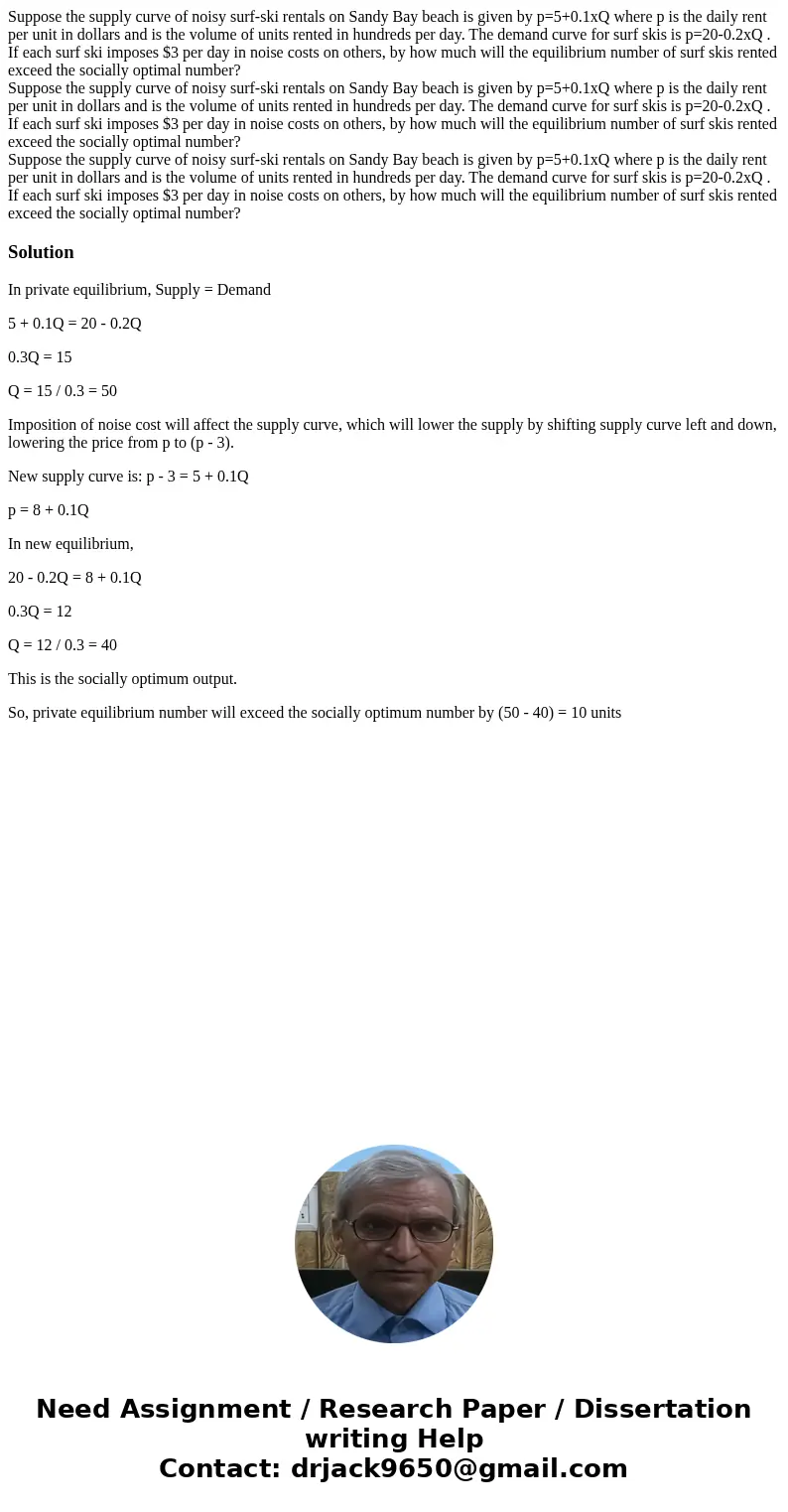Suppose the supply curve of noisy surfski rentals on Sandy B
Suppose the supply curve of noisy surf-ski rentals on Sandy Bay beach is given by p=5+0.1xQ where p is the daily rent per unit in dollars and is the volume of units rented in hundreds per day. The demand curve for surf skis is p=20-0.2xQ . If each surf ski imposes $3 per day in noise costs on others, by how much will the equilibrium number of surf skis rented exceed the socially optimal number?
Suppose the supply curve of noisy surf-ski rentals on Sandy Bay beach is given by p=5+0.1xQ where p is the daily rent per unit in dollars and is the volume of units rented in hundreds per day. The demand curve for surf skis is p=20-0.2xQ . If each surf ski imposes $3 per day in noise costs on others, by how much will the equilibrium number of surf skis rented exceed the socially optimal number?
Suppose the supply curve of noisy surf-ski rentals on Sandy Bay beach is given by p=5+0.1xQ where p is the daily rent per unit in dollars and is the volume of units rented in hundreds per day. The demand curve for surf skis is p=20-0.2xQ . If each surf ski imposes $3 per day in noise costs on others, by how much will the equilibrium number of surf skis rented exceed the socially optimal number?
Solution
In private equilibrium, Supply = Demand
5 + 0.1Q = 20 - 0.2Q
0.3Q = 15
Q = 15 / 0.3 = 50
Imposition of noise cost will affect the supply curve, which will lower the supply by shifting supply curve left and down, lowering the price from p to (p - 3).
New supply curve is: p - 3 = 5 + 0.1Q
p = 8 + 0.1Q
In new equilibrium,
20 - 0.2Q = 8 + 0.1Q
0.3Q = 12
Q = 12 / 0.3 = 40
This is the socially optimum output.
So, private equilibrium number will exceed the socially optimum number by (50 - 40) = 10 units

 Homework Sourse
Homework Sourse